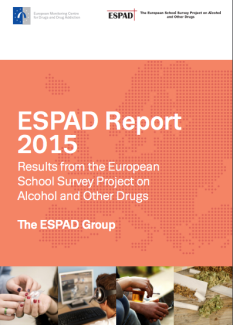ESPAD Report 2015

The European Schools Survey Project on Alcohol and Other Drugs (ESPAD) collects comparable data on substance use among 15- to 16-year-old students. It monitors drug usage trends within, as well as, between European countries.
The latest report presents the results from the sixth data collection. It is based on information provided by over 96,000 students from 35 European countries, 25 of which are current member states of the European Union. Since its conception in 1995, around 600,000 students have taken part in ESPAD data collection waves. This makes the survey one of the most harmonised and extensive data collections on European substance use.
Included in the 2015 report is information about:
- The perceived availability of substances
- Early onset of substance use
- Estimates regarding prevalence of substance use, which include data on cigarettes, alcohol, illegal drugs, inhalants, new psychoactive substances and pharmaceuticals
- Estimates regarding prevalence of internet use, gaming and gambling.
- Overall trends from 1995 – 2015
Among the survey’s conclusions, notable are:
- Generally, the data collected on smoking habits can be viewed as showing positive developments.
- Despite high rates of alcohol use, consumption has, on the whole, decreased over the past two decades.
- There was found to be a general upward trend between 1995 – 2003 in the prevalence of illegal drug use. Since 2003, however, prevalence has remained largely stable.
- The use of tranquillisers and sedatives shows a gradual downward trend over the last 20 years.
- On average 14% of students admitted to gambling for money at least once in the last 12 months, while 7% said that they gambled frequently (2 – 4 times a month or more).
Click here to read the 2015 European Schools Survey Project on Alcohol and Other Drugs in full.
